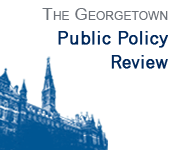by Jessica Wintfeld
A blip. A statistical aberration. These were the terms some experts used to describe the crime rate in 2005, when the national crime rate increased for the first time in 14 years. Perhaps this was a safe assumption. One year does not unmake a trend that has been built over a decade. It could, however, signal changes to come. John Roman, crime policy expert at the Urban Institute, noted that in the past 30 years, with only one exception, a change in direction in the crime rate proceeded a longer trend. Numbers from the FBI’s Preliminary Semiannual Uniform Crime Statistics for the first six months of 2006 and estimates for the latter half of the year seem to confirm an upward shift in the crime rate.
In 2005, violent crime increased 2.5 percent nationwide with the murder rate up 4.8 percent from 2004. While New York, Los Angeles and Miami continued to report decreases in their murder rates, Midwestern cities such as St. Louis and Milwaukee reported increases. Cities with over 500,000 residents had the largest increase in violent crime at 8.3 percent and violent crime in the Midwest increased 5.7 percent. According to the FBI’s Semiannual Report released in mid-December, violent crime had increased another 3.7 percent nationwide in the first six months of 2006. Murder increased 1.4 percent, robberies 9.7 percent and aggravated assault 1.2 percent over the same period in 2006 It was estimated that these trends continued in the second half of the year.
Before we can explain why the crime rate has suddenly increased, it may help to understand where and when the downward trend started.
The late 1980s and early 1990s saw the peak of a crime epidemic that affected large and small cities as well as urban and suburban communities. Then in the mid-1990s, crime unexpectedly fell sharply. Experts had not anticipated the decline, with even the most optimistic predictions forecasting a steady, albeit slower, increase over the next decade. The decrease, like the endemic was observed across varied geographic locations.
There are several hypotheses as to why crime fell so dramatically. Some experts credit the economic growth of the 1990s for the decrease in crime. They argue that legitimate work opportunities provided alternatives for individuals who would otherwise engage in property offenses. However, this theory fails to account for the decrease in violent crime that also occurred at the time. Another hypothesis claims that the population was aging and because older individuals are statistically less likely to commit crimes the numbers dropped. Scholars additionally argue that improvements in policing procedures and stricter gun control laws caused the decrease in crime. Dr. Steven Levitt, author of Freakonomics, argues instead that the real reasons were an increase in the number of police on the streets, the decline of the crack epidemic, the increase in the prison population and the legalization of abortion.
So, what has changed in the last two years to cause a significant and consistent decrease in the crime rate to reverse itself?
Again, there is no shortage of theories. Scholars and experts alike are now pointing to increases in gun ownership; increases in the population subset that is statistically prone to crime; increases in methamphetamine use, particularly in the medium sized Midwestern cities; and the constant influx of previously incarcerated individuals back into the general population.
There is another possibility in a program whose implementation and budget reduction almost perfectly coincides with the mid-90s decrease in crime and the recent increase: the Community Oriented Policing Services (COPS).
COPS provides grants to tribal, state, and local law enforcement agencies to hire and train community policing professionals, acquire and deploy cutting-edge crime-fighting technologies, and develop and test innovative policing strategies. It was created as part of the 1994 Violent Crime Control and Law Enforcement Act. In the years following its inception, COPS received $1.2 billion annually, helping 11,000 agencies hire more than 100,000 police officers. Before President Clinton left office, he secured more than $1 billion to hire an additional 50,000 officers by 2005. The Government Accountability Office, in a 2005 report, found that the program was at least partly responsible for reducing crime; between 1994 and 2001, there was a 29 percent decline in violent crime.
Despite the proven success, the plan to continue and further increase police presence was abandoned in the wake of 9/11, which shifted priorities away from traditional policing and toward anti-terrorism programs. After 2001, the amount allocated to COPS progressively dropped until it hit zero. Administration officials argue that $3 billion is distributed by the Department of Homeland Security for state and local purposes and should balance the cuts to the COPS program. However, those funds are often earmarked for homeland security-specific programs that are not synonymous with the needs of law enforcement.
The International Association of Chiefs of Police contends that since 1997, total federal grants distributed to support local policing have plunged from $2.4 billion to $890 million. Further, federal agencies that previously supported local efforts to curb drug related crimes and violent crimes and robberies now primarily work on anti-terrorism details. Now local police with less funding must now fill the void left by federal agencies.
Democratic Senator Joseph Biden has introduced legislation to return funding to the COPS program and other programs from the 1994 Crime Bill that have since been cut. Perhaps the re-implementation of these programs can prevent the crime rate from continuing to rise.
Email Jessica Wintfeld at jrw53@georgetown.edu
Established in 1995, the Georgetown Public Policy Review is the McCourt School of Public Policy’s nonpartisan, graduate student-run publication. Our mission is to provide an outlet for innovative new thinkers and established policymakers to offer perspectives on the politics and policies that shape our nation and our world.
